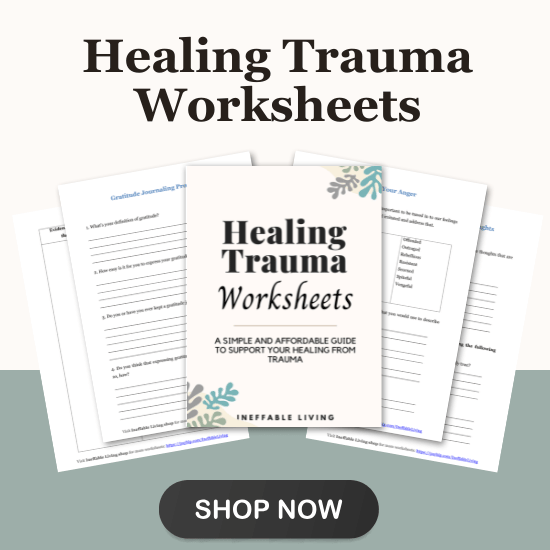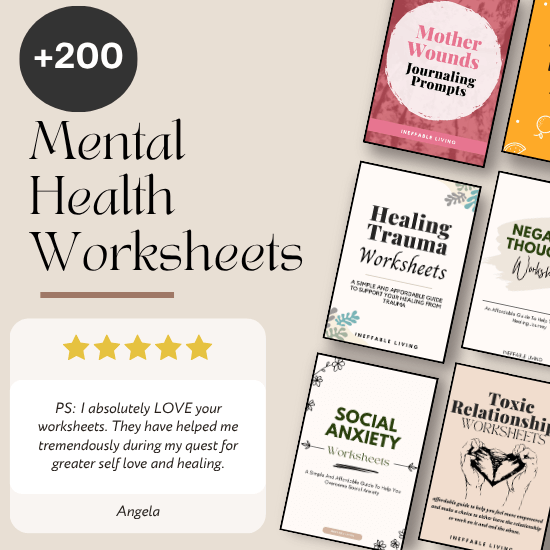Workplace PTSD often develops after prolonged exposure to toxic environments, harassment, bullying, exploitation, or sudden traumatic incidents like public humiliation or wrongful termination. Even after leaving the job, reminders of that environment can reawaken physical and emotional distress. These triggers can appear in subtle, everyday moments, often catching you off guard. Recognizing them helps you understand your reactions as trauma responses — not overreactions.
What Workplace PTSD Is
Workplace PTSD (Post-Traumatic Stress Disorder) happens when someone experiences or witnesses severe stress, bullying, harassment, or repeated psychological harm in a professional environment. It’s not just “work stress” or burnout—it’s trauma that rewires how you feel about safety, authority, and your ability to trust others at work.
How It Shows Up
- Anxiety or panic before starting work or checking emails.
- Nightmares or intrusive thoughts about past workplace events.
- Difficulty concentrating or feeling constantly on alert.
- Emotional numbness, irritability, or sudden anger.
- Avoiding professional spaces or job opportunities similar to the old environment.
- Feeling distrustful toward supervisors or authority figures.
These reactions don’t mean you’re overreacting—they’re your body’s memory trying to protect you from further harm.
20 Common Triggers for Workplace PTSD
1. Unexpected Criticism
Receiving feedback, even if constructive, can trigger memories of past verbal abuse, belittlement, or micromanagement. The body interprets criticism as danger, activating the same fear that once kept you silent or compliant.
2. Authority Figures or Supervisors
Seeing or hearing from someone in a leadership position may trigger anxiety or hypervigilance, especially if past authority figures misused power or created fear. Your body associates hierarchy with threat.
Related: How Resilience Works? Top 10 Powerful Ways to Stay Healthy and Happy During Tough Times
3. Performance Reviews or Evaluations
Formal assessments can stir panic, self-doubt, or shame if they once served as tools of humiliation or manipulation. Even minor comments can feel like reliving moments of being trapped or publicly devalued.
4. Emails or Notifications
For those who endured constant digital surveillance, hostile communication, or late-night demands, even the sound of an email ping can spike adrenaline. It’s the body bracing for another unpredictable attack.
5. Being Ignored or Excluded
If you were ostracized, dismissed, or gaslighted at work, moments of being left out of conversations or decisions can feel like emotional abandonment. The silence echoes old rejection wounds.
6. Group Meetings or Team Calls
Meetings can mirror past experiences of being talked over, embarrassed, or dismissed. Sitting in a group setting may feel unsafe, particularly if it once represented exposure to collective hostility.
Related: Best 10 Resilience Books
7. High-Pressure Deadlines
Time-sensitive tasks can trigger memories of burnout or unrealistic expectations. The body recalls the constant urgency that once forced you to ignore rest, leading to exhaustion or collapse.
8. Workplace Conflict or Raised Voices
Arguments, even between others, can activate fight-or-flight responses. For someone who’s endured bullying or aggression, conflict doesn’t feel situational — it feels like danger returning.
9. Being Micromanaged
Excessive oversight can reactivate feelings of helplessness and mistrust. It mirrors dynamics where autonomy was stripped away, reinforcing the belief that you can’t do anything right.
10. New Work Environments
Even positive change — a new job, a new team — can trigger anxiety. The unfamiliar setting reminds your nervous system of previous transitions that ended in betrayal or loss.
Related: 7 Trauma Release Exercises To Support Your Recovery After Trauma
11. Sudden Changes in Policy or Management
Organizational shifts can feel destabilizing when unpredictability once signaled danger. Your body expects chaos, even when changes are neutral or beneficial.
12. Colleagues Who Resemble Past Abusers
A coworker with similar tone, posture, or facial expressions as a past bully can unconsciously trigger old memories. Your nervous system reacts to resemblance, not rational evaluation.
13. Overwork or Lack of Boundaries
If your trauma involved exploitation, being overworked now can trigger deep resentment or fear. Feeling pressured to “prove yourself” reactivates memories of being used or undervalued.
14. Praise or Recognition
Even positive attention can feel unsafe if it previously preceded punishment, jealousy, or manipulation. You might instinctively minimize accomplishments to avoid becoming a target.
Related: How to Use the Safe Container Method to Process Trauma?
15. Being Asked to Stay Silent
Requests to “keep things professional,” “stay neutral,” or “not make a scene” can trigger anger or despair if silence was once forced upon you to protect others’ comfort over your truth.
16. Physical Spaces or Sensory Cues
Office layouts, lighting, uniforms, or even the smell of certain cleaning products can transport you back to traumatic moments. The body stores these sensory details as reminders of threat.
17. Job Insecurity or Contract Renewal
Periods of uncertainty may echo times when your livelihood was threatened or taken away. The anxiety isn’t just about finances — it’s about safety and survival.
18. Isolation or Remote Work
Working alone can reawaken memories of being unsupported or abandoned during stressful times. The absence of safety cues, like a kind colleague or validating glance, heightens internal tension.
Related: Top 10 Signs You’re Stuck In Freeze Response
19. Power Imbalances
When authority and accountability are uneven, you may experience flashbacks of exploitation or helplessness. Even subtle reminders of hierarchy can feel threatening to someone whose trust was broken by power.
20. Being Asked to “Move On” Too Soon
Hearing that you should “get over it” or “let it go” can retraumatize you. Dismissal of pain mirrors the same invalidation that caused harm in the first place.
Related: How to Manage Acute Stress Syndrome?
How to Heal from Workplace PTSD?
1. Acknowledge That What You Experienced Was Traumatic
Many people minimize workplace trauma because it didn’t involve physical harm. But constant humiliation, gaslighting, or fear of job loss can have the same impact on your nervous system as other forms of trauma. Naming it as trauma is the first act of validation and self-compassion.
2. Rebuild a Sense of Safety Before Productivity
Don’t rush to perform or “bounce back.” Focus first on feeling safe — physically, emotionally, and psychologically. Ground yourself with routines, calming environments, and supportive people. Safety must come before recovery or professional goals.
3. Allow the Emotions You Suppressed at Work
Workplace trauma often forces emotional suppression — fear, anger, humiliation, grief. Give those emotions space now: cry, journal, vent, or express creatively. Releasing the feelings that were once forbidden helps your body discharge the stress it’s been storing.
4. Identify and Name Your Triggers
Notice what activates your anxiety — emails, meetings, certain tones of voice, or even particular words. Naming your triggers helps you separate past from present: “This discomfort belongs to then, not now.” Awareness breaks the automatic fear response.
Related: What Is Hyper Independence Trauma?(+4 Steps To Healing)
5. Reconnect With Your Body
PTSD disconnects you from your physical self. Gentle grounding practices — deep breathing, yoga, stretching, or mindful walking — help you feel safe inside your body again. The goal isn’t relaxation; it’s re-inhabiting yourself without fear.
6. Challenge Internalized Blame
Workplace abusers often shift responsibility onto their victims. You may still hear the echo of “You’re too sensitive” or “You can’t take feedback.” Counter those messages with truth: “I reacted normally to an unsafe situation.” Healing requires reclaiming your narrative from manipulation.
7. Work With a Trauma-Informed Therapist
Therapy designed for trauma — such as EMDR, somatic experiencing, or Internal Family Systems — can help process stored memories and sensations. A trauma-informed therapist will validate that workplace PTSD is real and help you safely revisit painful experiences without being re-traumatized.
Related: Do I Have Trauma? Top 4 Practical Exercises To Support Your Trauma Healing
8. Rebuild Boundaries Around Work
Trauma often erodes boundaries. Practice saying no to unreasonable demands, logging off at set hours, and taking breaks without guilt. Boundaries tell your nervous system, “I’m safe now; I decide what’s enough.”
9. Redefine Success on Your Own Terms
Workplace trauma can distort your sense of worth, tying value to output or perfection. Redefine success around wellbeing, integrity, and authenticity — not performance. Healing begins when your self-esteem is no longer dependent on productivity.
10. Relearn What Safe Leadership Feels Like
If you’ve only known toxic management, even kind authority figures can trigger suspicion. Observe new leaders or mentors who model empathy and fairness. Let your nervous system slowly relearn that authority doesn’t always mean harm.
11. Rebuild Trust in Yourself
Trauma at work makes you doubt your judgment. Start rebuilding trust through small decisions — choosing when to rest, what to say, what projects to take on. Each choice reinforces, “I can rely on myself again.”
12. Engage in Narrative Healing
Write about what happened — not just the events, but their emotional impact. Then, rewrite the story emphasizing your strength: how you endured, what you learned, and how you’re reclaiming your power. Re-authoring the story transforms you from victim to survivor.
13. Create Supportive Work Relationships
If you return to the workforce, seek environments where collaboration, communication, and kindness are valued. Start with small interactions that feel safe. Positive workplace experiences help rewire your brain to associate work with trust, not threat.
Related: Best 15 Inner Child Exercises: How To Connect With Your Inner Child (& Heal Your Childhood Wounds)
14. Address the Physical Aftereffects
Workplace trauma can leave fatigue, insomnia, muscle tension, or headaches. Treat your body as part of healing — rest, hydrate, move, and seek medical support if needed. The body remembers what the mind tries to forget; caring for it accelerates recovery.
15. Practice Gentle Exposure to Work-Related Tasks
If certain work activities trigger panic — like checking emails or joining meetings — reintroduce them slowly. Pair exposure with grounding techniques and safe support. You’re teaching your brain that the old threat is no longer real.
16. Find Meaning Beyond the Workplace
Trauma narrows life to survival. Reconnect with hobbies, nature, volunteering, or relationships that remind you of your humanity outside work. The more you invest in life beyond labor, the less power the traumatic past holds.
17. Allow Time for Integration
Healing from workplace PTSD is not linear. There will be relapses and calm periods. Progress looks like noticing triggers sooner, recovering faster, and trusting your resilience again. Integration is slow but steady.
18. Reclaim Joy and Rest Without Guilt
You don’t have to earn recovery through productivity. Joy, rest, and peace are not rewards — they’re medicine. Every moment of laughter or relaxation retrains your body to recognize safety and belonging again.
Related: Best 20 Healing Shame Exercises To Break Free From Toxic Shame

Conclusion
Workplace PTSD isn’t about weakness — it’s the body’s way of remembering danger long after leaving it. Understanding your triggers allows you to approach them with awareness, not shame. Healing begins when you learn to ground yourself in safety, reclaim your boundaries, and remind your body that the threat is no longer here — that this time, you have control.



